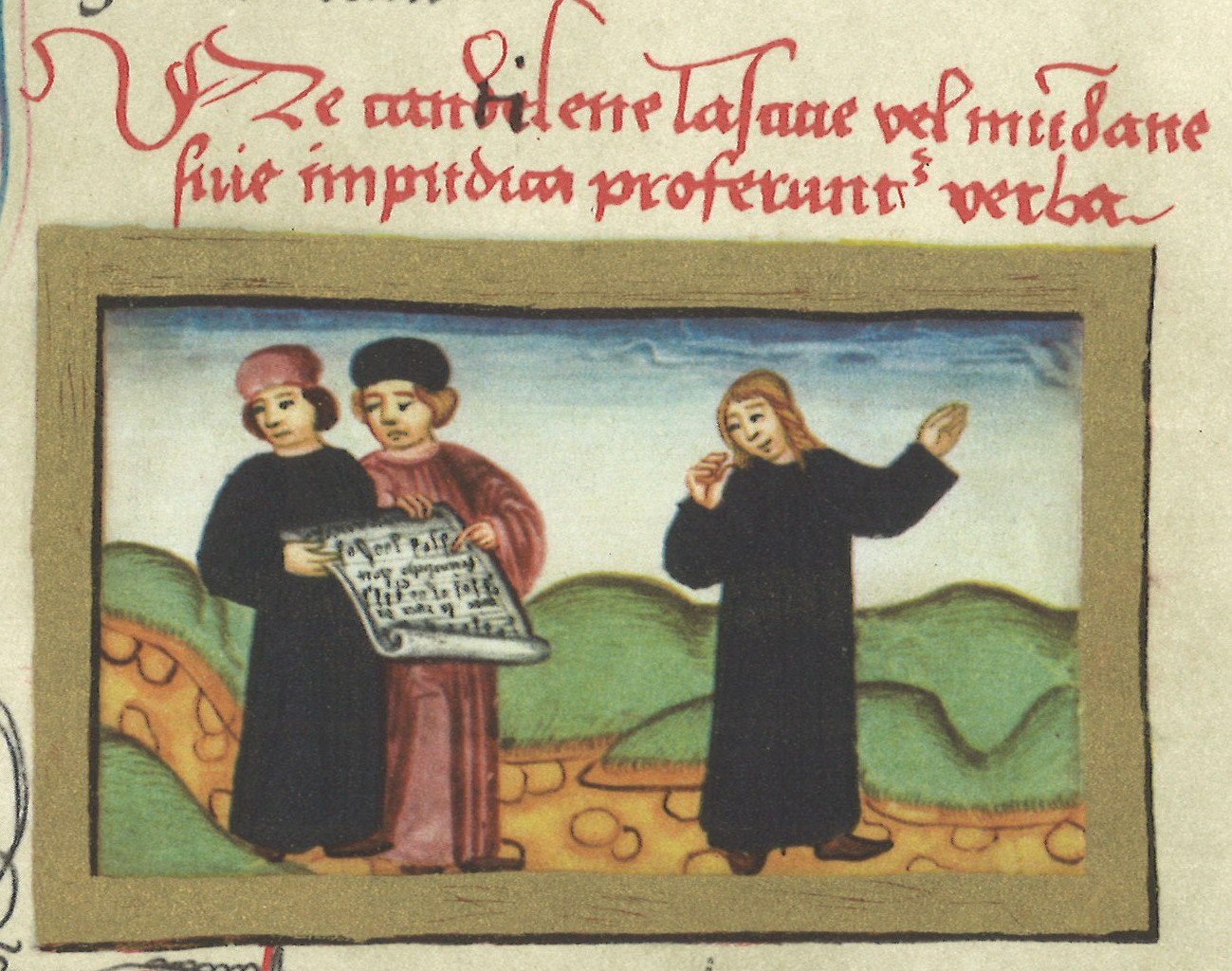H. Learning, singing, playing, dancing
Music was indispensable as a communal practice in numerous contexts in life. The musical education of young people was still largely reserved for the monasteries, where theory lessons primarily assisted in the daily practice of chanting liturgy. In addition, however, there is much evidence of the participation of young people in public performances in the city and at court. Poor pupils earned their school fees from their participation in performances, organised by the schools, on feast days (later called ‘Kurrende’). Public events with music included the increasingly bourgeois spiritual and secular plays that assumed enormous proportions in Tyrol around 1500. The music offered ranged from sacred song and traditional plainchant to illustrative instrumental music and Satanic screams. Archival and iconographic sources provide information on the use of musical instruments in all strata of society. The Instrumentenmuseum offers an acoustic and visual panorama of musical instruments that existed in the region at the time. Dancing was popular among all classes but was suspected in some ecclesiastical writings as the work of the devil; this hardly stopped the practice but provides valuable insights to the historical hindsight today.
The texts marked with * are not yet available online.
- Schule, Musik und Kantorei*
- Jugendliche Musiker bei Hofe*
- Die „Kurrende“*
- Die Tiroler Spieltradition. Musik und Tanz in geistlichen und weltlichen Spielen
- Die Tiroler Spieltradition. Das Sterzinger Spielarchiv
- Minstrels and Instrument-Makers in Maximilian’s realm*
- Instrumentenmuseum
- Tanz und Verderben. Tanzwut in Klosterneuburg
- Tanz und Verderben. De ludo coree: eine Wiener Tanzpredigt des 15. Jahrhunderts
- Civic and courtly dancing*
- Lautenisten und Lautenspiel in der bürgerlichen Gesellschaft des frühen 16. Jahrhunderts
